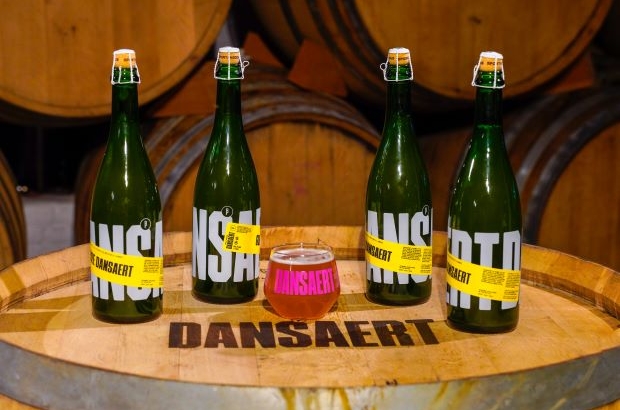- Daily & Weekly newsletters
- Buy & download The Bulletin
- Comment on our articles
Brussels Beer Project uncorks its first gueuze for 10th anniversary celebration
Known as the champagne of Brussels, the gueuze is an emblematic brew for the Belgian capital. Now Brussels Beer Project (BBP) is launching its first highly-distinctive lambic beer.
While the Belgian capital boasted a wide variety of local gueuzes in the early 20th century, family-run Cantillon has been the lone survivor of that golden era.
Craft brewer BBP is presenting its inaugural gueuze at its Wanderlust Anniversary Festival at Place Sainte-Catherine on 9 and 10 September.
The event marks the craft brewer’s 10th anniversary as well as its meteoric rise within the local brewing scene.
From two friends brewing in a small garage, the project has grown into an international company with two breweries in Brussels and five taprooms in Belgium and France.
Creating over 300 beers in a decade, the brewery is b-corp certified and committed to making a positive impact through circular economy project and a transition towards local regenerative agriculture.
BBP surprised the brewing world by starting work on lambics brewed at its Rue Dansaert base from 2019. In December 2020, it launched a spontaneous fermentation programme, entitled DANSAERT, introducing the very first batches of lambic.

A unique Belgian process
The gueuze is an invaluable part of Belgian and Brussels heritage that embodies a brewing art deeply rooted in local history and culture.
Its creation process dates back to the 19th century, involving spontaneous open-air fermentation and the delicate blending of lambics, beers that mature slowly in wooden casks for three to four years.
The term 'Brussels champagne' originates from the fact that fermentation is possible with a legendary yeast only found in the area surrounding of the capital and the Senne River, brettanomyces bruxellensis.
However, while Brussels had over a hundred lambic and gueuze-focused breweries a century ago, only Cantillon has survived. There had been no new Brussels-based gueuze brewery since World War Two.
Meanwhile, other breweries in nearby Pajottenland and a few other parts of Flanders have continued to produce the seasonal brew.
A reimagined Brussels symbol
In recent years, BBP has collaborated on its lambic with the Anderlecht urban farm BIGH, using basil in aquaponics and with Permafungi, infusing local mushrooms.
For its gueuze, it follows the rules of ‘Oude Gueuze’ but draws from its experience of producing new beers. The use of Belgian barley from regenerative agriculture has been important as the brewer aims for the most local and sustainable product.
Due to its spontaneous profile, the tasting experience of a gueuze is always unique. While the brewer's skill plays a key role in brewing and blending, ultimately, nature decides. It’s akin to the natural wine phenomenon found in many restaurants and cafes today.
Tiago Falcone, the master brewer of BBP's 'DANSAERT' project, describes the gueuze: “It has notes of peach and apricot, mingling with floral and oaky accents from its maturation in barrels. On the palate, it combines lively acidity with a soft, velvety feel in the mouth.”



















